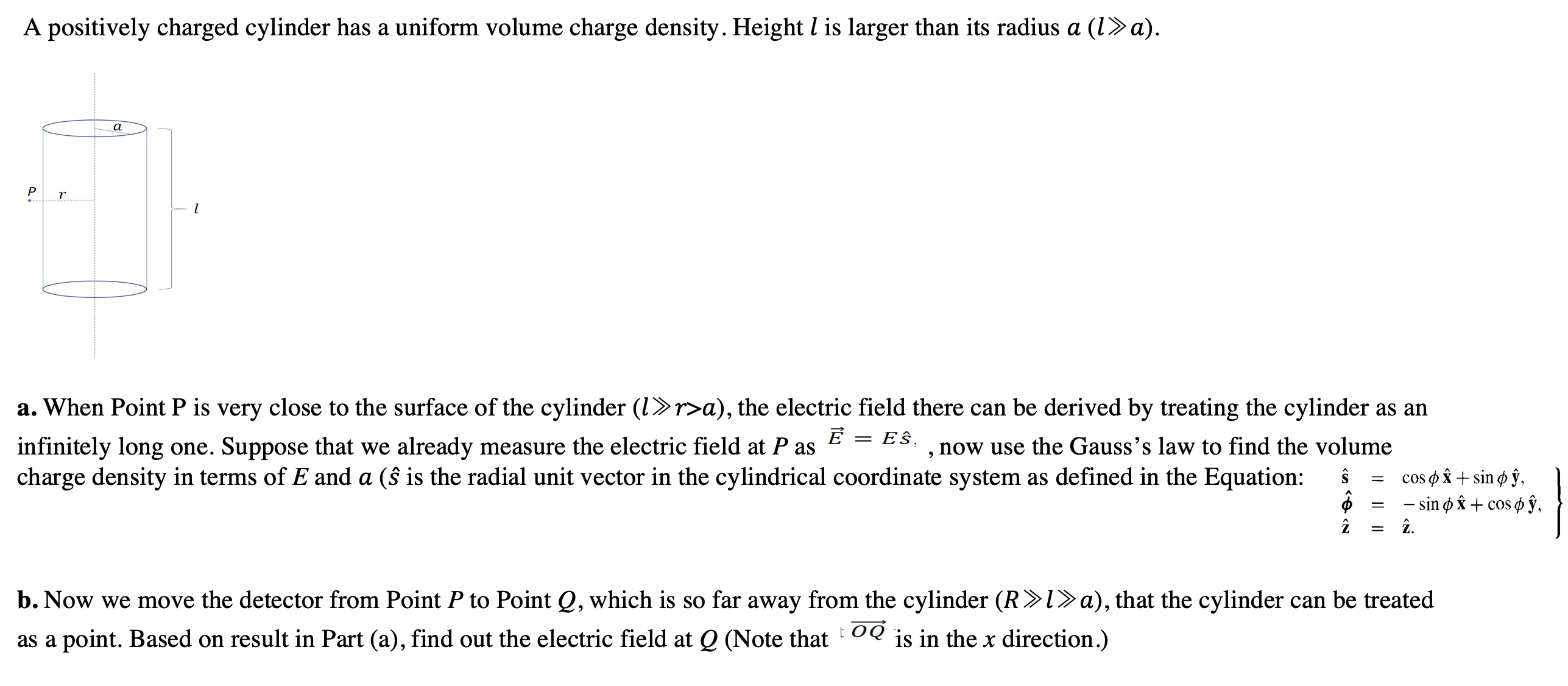A positively charged cylinder has a uniform volume charge density. Height l is larger than its radius a (1»a). a P a. When Point P is very close to the surface of the cylinder (1>r>a), the electric field there can be derived by treating the cylinder as an = Eŝ. infinitely long one. Suppose that we already measure the electric field at P as charge density in terms of E and a (ŝ is the radial unit vector in the cylindrical coordinate system as defined in the Equation: now use the Gauss's law to find the volume cos o â + sin ø ŷ, - sin ø Âx + cos ø ŷ, î. b. Now we move the detector from Point P to Point Q, which is so far away from the cylinder (R>l>a), that the cylinder can be treated as a point. Based on result in Part (a), find out the electric field at Q (Note that OQ is in the x direction.)
A positively charged cylinder has a uniform volume charge density. Height l is larger than its radius a (1»a). a P a. When Point P is very close to the surface of the cylinder (1>r>a), the electric field there can be derived by treating the cylinder as an = Eŝ. infinitely long one. Suppose that we already measure the electric field at P as charge density in terms of E and a (ŝ is the radial unit vector in the cylindrical coordinate system as defined in the Equation: now use the Gauss's law to find the volume cos o â + sin ø ŷ, - sin ø Âx + cos ø ŷ, î. b. Now we move the detector from Point P to Point Q, which is so far away from the cylinder (R>l>a), that the cylinder can be treated as a point. Based on result in Part (a), find out the electric field at Q (Note that OQ is in the x direction.)
Related questions
Question

Transcribed Image Text:A positively charged cylinder has a uniform volume charge density. Height l is larger than its radius a (1»a).
a
P
a. When Point P is very close to the surface of the cylinder (1>r>a), the electric field there can be derived by treating the cylinder as an
= Eŝ.
infinitely long one. Suppose that we already measure the electric field at P as
charge density in terms of E and a (ŝ is the radial unit vector in the cylindrical coordinate system as defined in the Equation:
now use the Gauss's law to find the volume
cos o â + sin ø ŷ,
- sin ø Âx + cos ø ŷ,
î.
b. Now we move the detector from Point P to Point Q, which is so far away from the cylinder (R>l>a), that the cylinder can be treated
as a point. Based on result in Part (a), find out the electric field at Q (Note that OQ is in the x direction.)
Expert Solution
This question has been solved!
Explore an expertly crafted, step-by-step solution for a thorough understanding of key concepts.
Step by step
Solved in 4 steps with 7 images
